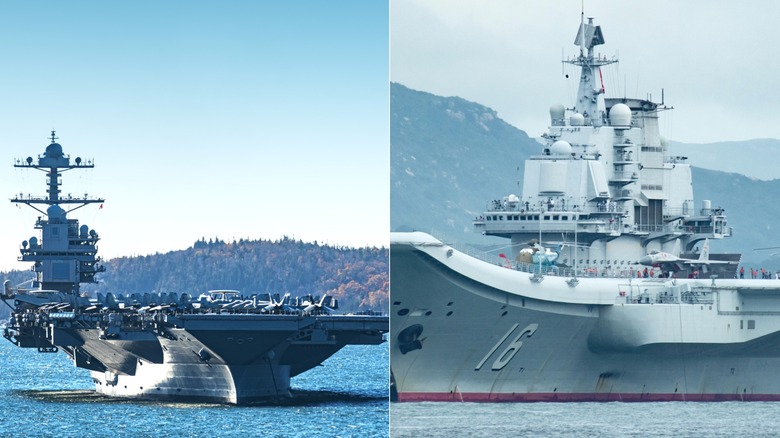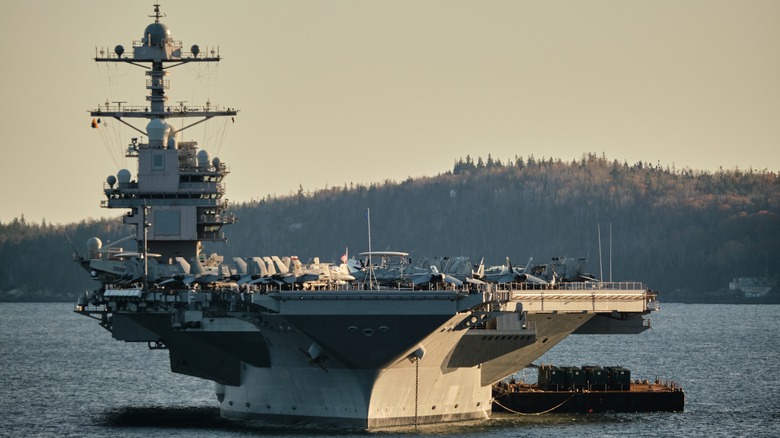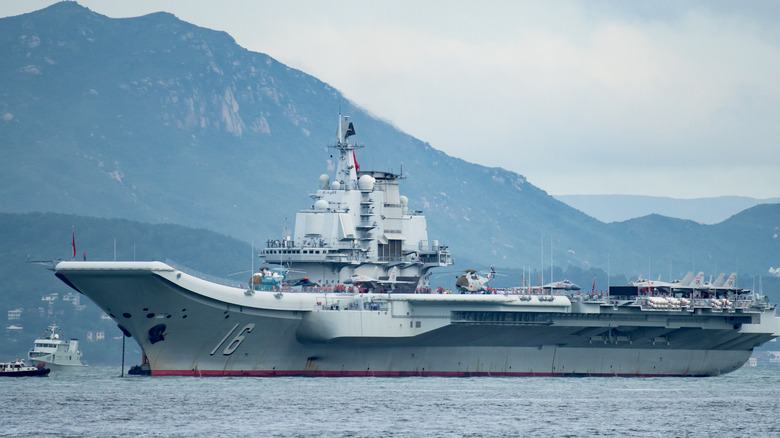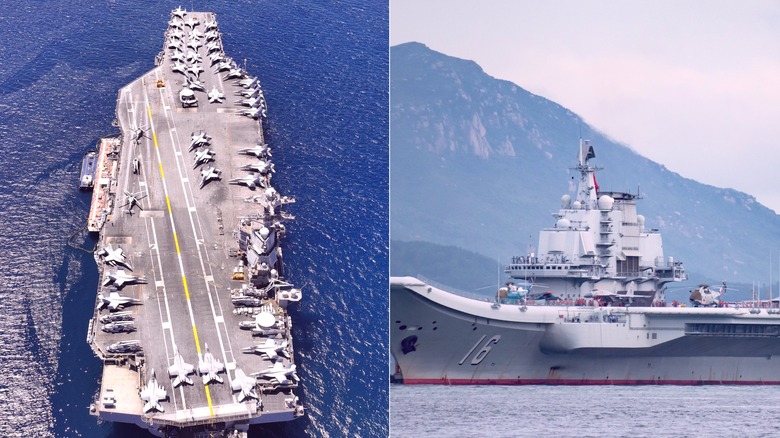USS Gerald R. Ford Vs. Chinese Aircraft Carrier Liaoning: How Do They Compare?
The United States has used aircraft carriers since the Navy commissioned the USS Langley (CV-1) in 1922. Since then, these massive navy ships designed to float in various international seas have expanded in size and number. As of early 2024, the U.S. Navy had 11 active aircraft carriers, each with its own group of support ships.
U.S. aircraft carriers are extremely hard to sink and they make it possible for the U.S. to engage in combat operations anywhere in the world. As a floating airbase, a carrier sends various aircraft into enemy territory from a safe distance and is incredibly well-defended by supporting ships both above water and below. The U.S. has the best fleet of aircraft carriers in the world, but things are a bit different in China.
The People's Republic of China didn't commission its first aircraft carrier until the Liaoning entered active service in 2012. There are some significant differences between the Liaoning and the most recent U.S. carrier, the USS Gerald R. Ford (CVN-78). For the most part, the Ford outclasses its Chinese counterpart, but that doesn't make the Liaoning an ineffective warship.
What is the USS Gerald R. Ford?
The USS Gerald R. Ford is the U.S. Navy's most advanced aircraft carrier. Originally commissioned on July 22, 2017, it's not only the most recent aircraft carrier to enter the inventory but also the largest carrier ever constructed. The Ford has 25 decks, is 1,106 feet long, and has some 100,000 long tons of displacement. It is the first in the new Gerald R. Ford-class of ships, replacing both the Enterprise and Nimitz-class aircraft carriers.
Two nuclear reactors power the Ford to reach speeds of at least 34 mph. It is crewed by over 4,500 personnel and can carry and launch more than 75 aircraft. Because it replaced traditional launch systems with the Electromagnetic Aircraft Launch System (EMALS), which is basically a U.S. Navy-tested electromagnetic catapult for aircraft, it can also launch 25% more aircraft than its predecessors.
In terms of armament, the Ford isn't limited to its massive squadron of attack aircraft. It has three Phalanx Close-In-Weapon System cannons, four Mk 38 25mm Machine Gun Systems, and multiple M2 .50-caliber machine guns. In addition to its guns, the Ford carries two Mk 29 missile launchers capable of firing 16 RIM-162 Evolved SeaSparrow Missiles and two Mk 49 missile launchers capable of firing 42 RIM-116 Rolling Airframe Missiles.
What is the Liaoning?
The story behind China's Liaoning traces back to the Soviet Navy. There, it was a Kuznetsov-class aircraft carrier named Riga. China purchased the carrier from the Ukraine in 1988, and rebuilding efforts concluded in 2012. The ship was then designated a Type 001 and given the name Liaoning. In 2016, it was ready for combat.
There is some conflicting information about the specs of the Liaoning partly because some of its original dimensions were not clearly recorded. However, much is known about the Liaoning's capabilities. The carrier displaces up to 65,000 tons and is over 950 feet long. It's powered by steam turbines, coupled with various turbogenerators and diesel generators that allow the ship to travel 34.5 mph with a crew of around 2,600 personnel. The carrier can hold various configurations of fixed-wing and rotary aircraft, including different numbers of Shenyang J-15s, Changhe Z-18Fs, Changhe Z-18Js, and Harbin Z-9s, among others.
For arms, the Liaoning carries the Flying Leopard 3000 naval missile system, the Type 1030 close-in weapon system, anti-submarine warfare (ASW) rocket launchers, two RBU-6000 Smerch 2 anti-submarine weapons, and the Type 346 S-band AESA. In 2023, the Liaoning also began a refit to upgrade its various weapons and sensors.
How do they compare?
Overall, the U.S. has more than a century of experience fielding carriers, and its USS Gerald R. Ford outclasses China's refurbished Soviet vessel. That said, the Liaoning is a strong aircraft carrier. Despite the fact that the Ford is nuclear-powered and the Liaoning is fueled by coal, they still reach comparable top speeds. There are various advantages to diesel versus nuclear aircraft carriers, but one advantage of nuclear power is that it helps the Ford remain at sea for a long time and have a wider range.
The Ford doesn't go anywhere without the Carrier Strike Group 12, which includes a missile cruiser and four guided missile destroyers. The Liaoning also has a Carrier Strike Group, which often operates in the East China Sea and other waters throughout the Pacific Ocean. Its CSG consists of five destroyers, a frigate, and a fast combat support ship. Remember, though, that the Ford can carry at least 30 more aircraft than the Liaoning.
Ultimately, the Liaoning holds its own as a warship, but the USS Ford reigns supreme throughout the world. However, the PRC is working to catch up. China commissioned the Shandong in 2019 and the Fujian in 2022. Although both ships demonstrate significant improvements from the Liaoning, neither are nuclear powered like the Ford.



